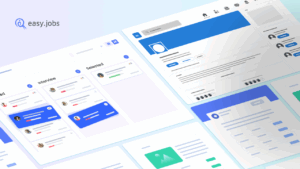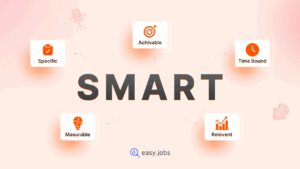JOLTS statistics indicate that over 50 million people left jobs in 2022, shattering the previous year’s record. And then, the complexity of workplaces and employee management has followed. So, companies need to keep track of employee retention rates, the proportion of employees who stay at your company over a specific period. Having that said, understanding and calculating the employee attrition rate is crucial for your business, too, if you have been experiencing some levels of employee loss.

Additionally, according to Harvard Business Review, organizations with a high employee retention rate average had an average of 2.5 times the revenue increase of their competitors. This thorough guide will shed light on the necessity of the employee attrition rate, show you how to calculate it, and suggest methods you can use to improve employee retention and turnover in 2025 and beyond.
💡 Understanding The Significance Of Employee Attrition
The number of employees who leave a company within a certain period is called employee loss, which is often called churn or employee attrition rate. As simple as this description seems, high attrition rates have crucial impacts on the growth of a business. When a company loses skilled and experienced workers, it can hamper its business goals and turnover rates. So, if you want your business to grow and sustain in today’s competitive market, you need to understand the link between employee turnover and business success.
Aside from the direct loss of skilled workers, high attrition rates can have consequences on many parts of an organization. When employees leave, they leave with institutional knowledge, which often leads to less productivity and compromised quality. Also, the costs of hiring and training new employees can put a big dent in a business’s budget, which can hurt its bottom line and make it harder to spend in other growth areas.
A high employee retention rate average can also point to problems deeper in the organization, like poor management, low pay, or an unpleasant workplace. Because of these effects, companies need to put high attrition rates at the top of their list of priorities and take action to fix the issues that cause good employees to leave.
📊 Calculating Employee Attrition Rate: A Step-by-Step Guide

To find the employee attrition rate, you have to carefully look at the number of employees who left the company during a specific period and compare that to the average number of employees during that same time. This process helps companies fully understand how their employees work together and gives them helpful information about how well their employee retention and turnover strategies work.
By using this information, businesses can find patterns, trends, and possible areas for change. This lets them make smart choices and start focused projects that improve the workplace environment and make employees happier. Here are the steps you need to take to figure out your employee turnover rate.
Step 1: Choose the exact period you want to find the employee turnover rate for. This could be once a year, three times a year, or once a month, based on what works best for your business.
Step 2: Gather information about how many employees quit during the given time period. Make sure that this data covers all types of employee exits, such as retirements, cuts, resignations, and firings.
Step 3: Find the average number of employees during the same time period. To do this, add up the amount of workers at the start and end of the time and divide the result by 2.
Step 4: Use the formula: Employee Attrition Rate = (Number of Quits / Average Number of Quits) x 100. This figure tells you what percentage of workers quit during the given time compared to the average size of the workforce.
By comparing the estimated employee turnover rate to industry standards and past data, you can get a better idea of how healthy your organization is. Look for the reasons behind any troubling trends in the employee retention rate average based on your research. Create plans and tactics to deal with these issues to make employees happier, and create a good work environment to get the best results in terms of employee retention.
📝 Effective Strategies For Improved Employee Retention Turnover

Businesses must prioritize the adoption of thorough retention and loss strategies to fight the high employee retention rate average. Some of these tactics could be improving the way you hire talents, making sure you have good training programmes and giving people chances to learn new skills and move up in their careers.
An inspired and involved workforce depends on a company culture that puts the health and happiness of its employees first, helps them feel like they belong to an empathetic family, and supports a good work-life balance. There are many ways to improve employee retention and turnover, but here are some methods that will help you do it.
📌 Develop Comprehensive Onboarding
Develop a well-organized onboarding process to help newbies get used to the workplace and learn what their responsibilities are. You can help new employees get started by offering them introductions, get along with the teammates in a friendly manner, who can offer advice and support.
📌 Foster Positive Work Environment
Create a welcoming and helpful work environment where everyone feels valued, respected, and appreciated. To deal with employee issues and give them a way to voice their views and make ideas, encourage open communications, and ask for feedback.
📌 Offer Competitive Benefits
Make sure that pay and perks packages are always being looked at to make sure they stay competitive in the business. Reward your workers for their hard work and efforts by giving them performance-based awards, bonuses, and recognition programs.
📌 Promote Work-Life Balance
Promote work from home culture for employees and set their own hours when required, so that they can meet their personal needs and obligations. Encourage people to take their vacations and help them find a good mix between work and home life.
📌 Encourage Team Building
Conduct social events, team-building activities, and group projects to help your workers get to know each other and work together better. A creative work culture that values working together as a team and treating each other with care will surely benefit the whole organization.
📌 Conduct Performance Reviews
Set goals, give employees helpful reviews, and check in on their growth and development through regular performance reports. Provide your workers with regular chances to talk about their job goals, challenges, and ways to improve in a safe and helpful setting.
📌 Recognize And Reward Employee Achievements

A strong reward program can celebrate and recognize employees’ efforts, accomplishments, and outstanding work. To boost happiness and motivation, let the public know about and praise employees’ work through internal messaging, prize events, and social media.
By using these tactics, you can make the workplace more enjoyable and productive for employees of all levels, which will increase employee happiness, loyalty, and retention and eventually lead to increased employee retention and turnover and greater company success.
🎉 Adapting To The Shifting Dynamics Of The Future
The way people work will continue to change, and you, too, will have to make your employees adapt to changing wants and needs. There is a need for a strategic and forward-thinking approach to employee retention because of the growing importance of diversity, equality, and inclusion programmes and the growing desire for flexible work arrangements.
Understanding and managing employee attrition rates should be a top priority for any business that wants to do well in the future. If you have found this blog helpful, share your opinion in the comment sections or with our Facebook community. You can subscribe to our blogs for valuable tutorials, guides, knowledge, tips, and the latest recruitment updates.





